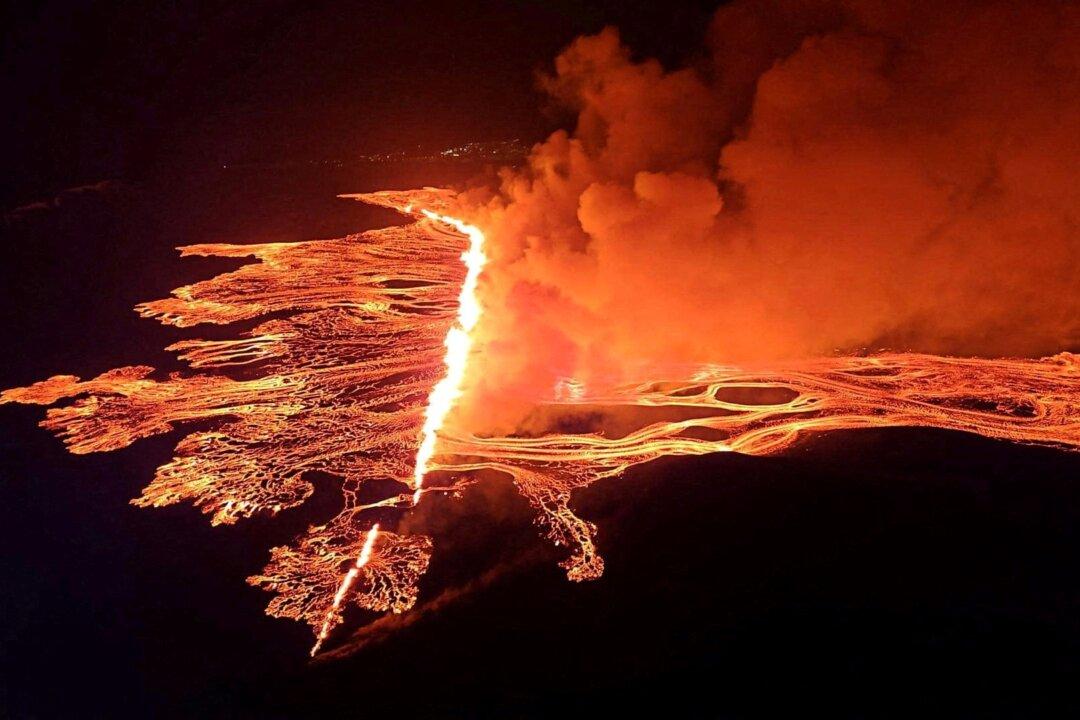COPENHAGEN, Denmark—A volcano in Iceland that erupted on March 16 for the fourth time since December 2023 was still spewing smoke and bright orange lava into the air early on March 18, although infrastructure and a nearby fishing town are safe for now, according to authorities.
The eruption was the seventh on the Reykjanes peninsula near Iceland’s capital, Reykjavik, since 2021, when geological systems that had lain dormant for about 800 years again became active.





